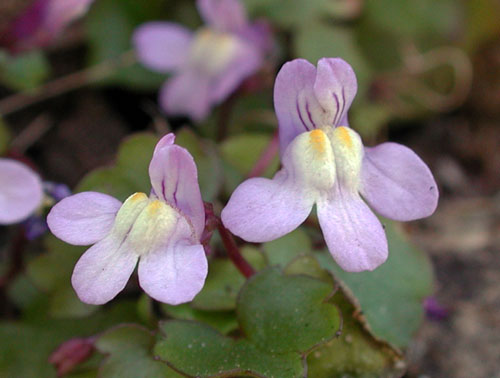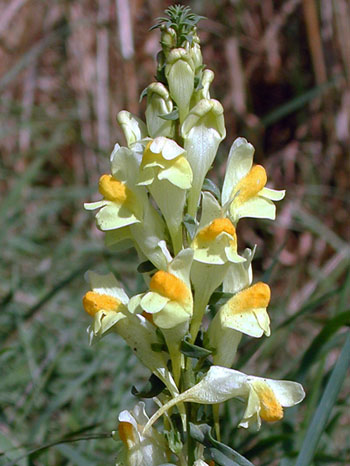
FLOWER OF THE MONTH - OCTOBER 2008
(Home)
IVY-LEAVED TOADFLAX (Cymbalaria muralis)

This pretty little plant, a native of Italy and other southern European countries, was introduced into English gardens in the early seventeenth century, to adorn walls; one suggestion was that the seeds were brought in accidentally to Oxford with imported marble sculptures! Richard Mabey describes it as “delicate but aggressive”, and certainly it is now found throughout Britain. The long-stemmed flowers, lilac with yellow on the lower lip, are shaped like those of snapdragons, to which they are related; the leaves, likewise on long stems, are palmately lobed. The flower stems bend outwards towards the light when in bloom, but then tend inwards as the seeds set so as to shed them into crevices in the wall. It can therefore spread upwards. The plant has acquired a couple of popular names, Mother of Thousands and Travelling Sailor, for obvious reasons.

Ivy-leaved toadflax on a wall in Helmdon Road.
Two other toadflax species are found in the Sulgrave area: the common or yellow toadflax (Linaria vulgaris), found on waste ground, and the purple toadflax (L. purpurea) – another import from Italy – often found as a garden escape.

Common or yellow toadflax.
Text by George Metcalfe. Photos by Colin Wootton.